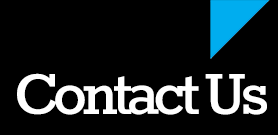
The lead author of the study, Anne Winther said “We found a relationship between higher screen time and lower bone mineral density in boys.” She said that the study may indicate that screen time (time spent watching TV or on a computer) is an indicator of a lifestyle that has “negative impact on bone mass acquisition.”
Bone mineral density (BMD) is the amount of mineral per square centimeter of bone. In the study they used boys and girls aged 15-19 years old. Bone density scanning was used to measure their bone mineral density at the hip, the top of the femur and other body areas. They found that boys with more screen time had lower BMD levels than girls. What was odd was that the girls BMD was higher with heavier screen time. The study also found that boys and girls who spent 2-4 hours, or more than 6 hours in front of the screen every day tended to be heavier than those who spent less time. Overall, boys spent more time in front of screens than girls (5 versus 4 hours a day). Winther also said “The most important finding was that the detrimental relationship between this screen-based sedentary behavior and bone mass density in boys persisted two years later”.
So what does this information mean? Dr Laura Bachrach, a paediatric endocrinologist, told Reuters health that there is this “critical time between being born and reaching the early 20s when you’re setting up the scaffolding of life (in terms of the geometry and density of the bone)”. She continued to say “You sort of max out in your early 20s and there is real concern that the lifestyle of young people nowadays versus 40 or 50 years ago is setting people up to be more at risk as adults for not having a very robust bone bank as they age”. Dr Bachrach said that this study focused on older teens, but todays sedentary lifestyle will also affect younger kids, especially 9-15 year olds.
Interestingly this may be why the study showed that the bone density was reduced in boys but not girls. The authors of the study didn’t know the answer for this. Dr Bachrach suggested it may be that girls mature earlier than boys and that they may be “more fixed in their position in the skeletal world by the time they started”.
What to make of this research
There is lot of research and articles out there that show the negative effects of a sedentary lifestyle on a wide range of health measurements. This article adds another reason why we need to move on the already long list. What I think is important here, is this is not just an adult problem, it is also a childhood problem. We need to make sure our children are moving and getting the physical activity they need to grow up healthy and strong and help prevent some of the conditions that are prevalent as we age. Good habits early in life will hopefully translate to good habits later in life.
The American College of Sports Medicine recommends 10-20 minutes of gymnastics or running or jumping, or other weight-bearing exercise at least 3 days weekly for children and adolescents. I feel it should even be more than this. I have noted in my practice the number of children and adolescents I see that have mobility issues already. I can imagine how these will progress as they age.
If you have children that like to have too much ‘screen time’ make sure you encourage them to get out and move, in fact, get out there and do it with them, your bodies will thank you for it.
References



 RSS Feed
RSS Feed


